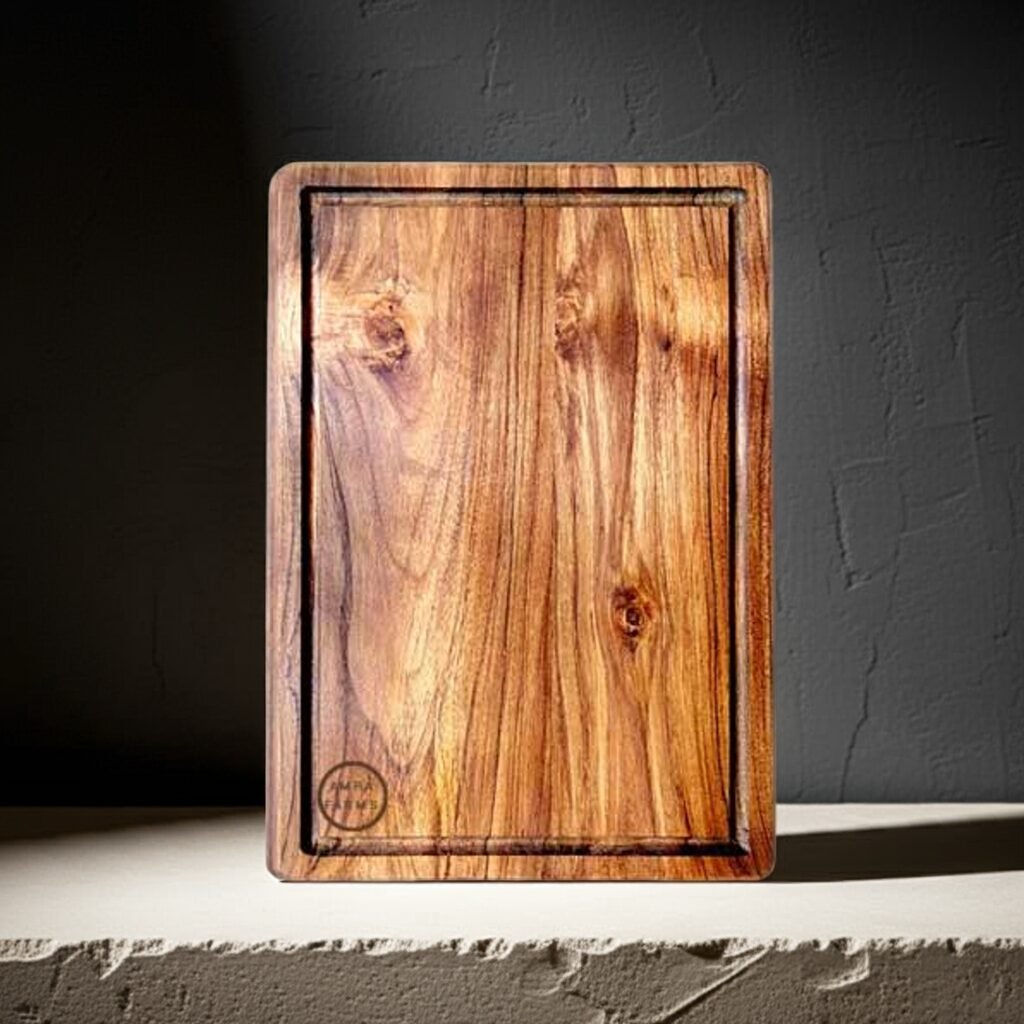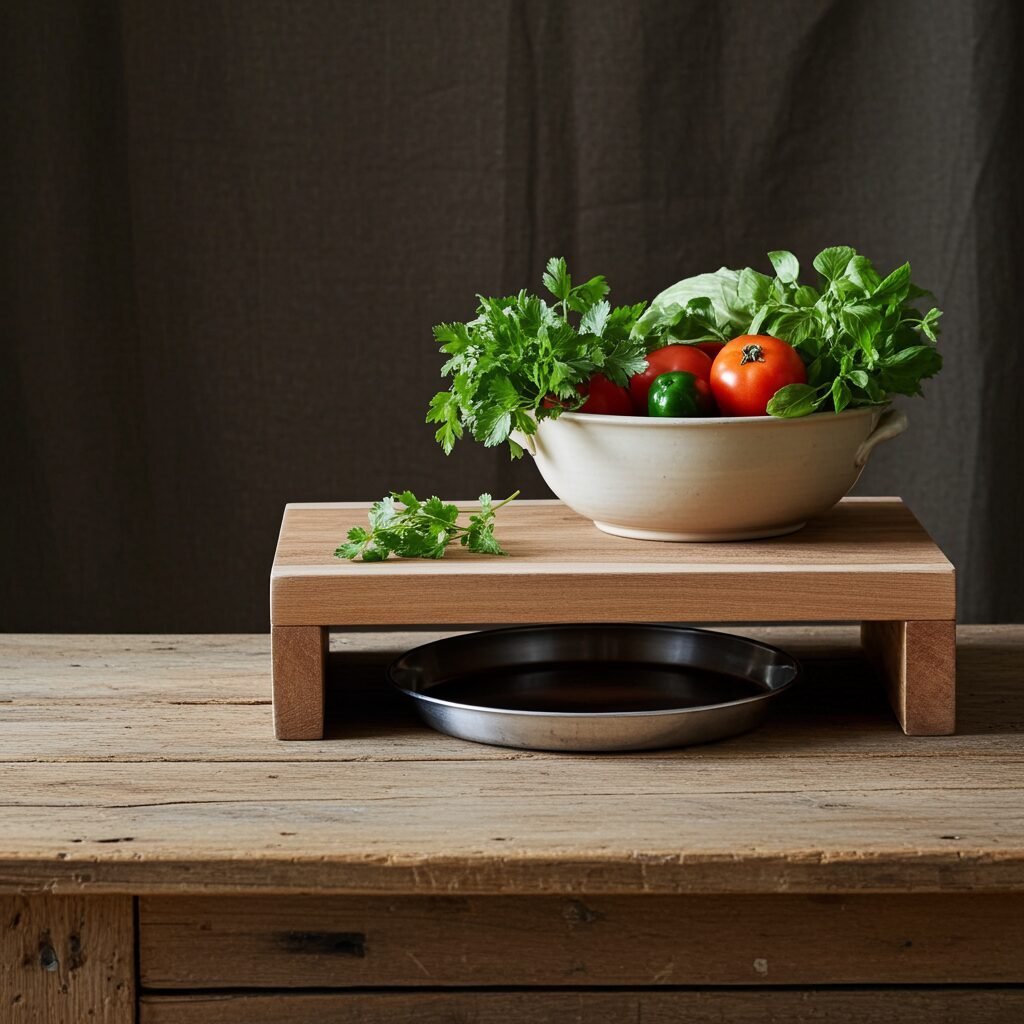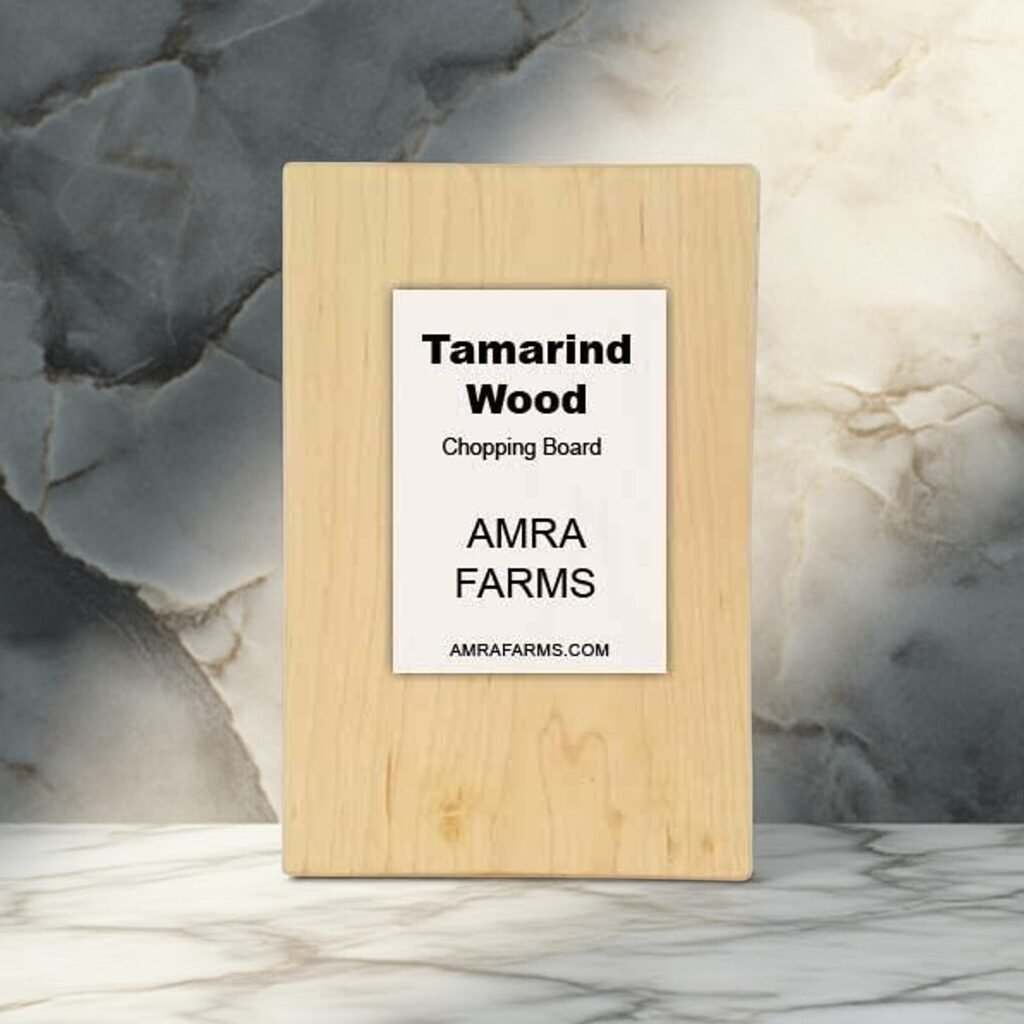Your cart is currently empty!
Why Wooden Chopping Boards Are Ideal for Kitchen Use
The most common tools in the kitchen are the most underrated ones. Think about it. We use a spoon, a spatula or a knife for instance and think it’s just another tool. The chopping board is one of the few that’s used daily but we always take it for granted. Much more than the other tools. We believe that a chopping board can be done without! Well in some cases it is true. A chopping board is just another tool to add convenience to your kitchen and the task of chopping vegetables or meat.
But is it all that is to a chopping board! Let’s see what happens without a chopping board in a kitchen. You are forced to cut food on a countertop. Small vegetables can be cut with your hands and a knife but that could lead to injury or scratch marks on your skin. You are left to clean the countertop which is a larger surface than a chopping board making it dirty over time. Also, the chance of damaging your countertop is much higher when you cut on them, with water leakage, poor hygiene etc.
Kitchen cutting boards make your life easy. It’s easier to clean, makes the task of chopping vegetables much easier and is definitely a tool every home kitchen should have. But what kind of cutting boards are good for home use? When it comes to wooden chopping boards there are a wide range of woods in the market. Starting from bamboo which is technically not wood but advertised so to soft wood and hardwood like teak. The wide varieties of wood is confusing to many consumers especially when it has safety concerns. Not all wood are good for cutting boards. Some woods are toxic. Others have health benefits. Some are long-lasting while others are short-lived. Let’s explore the varieties of wooden cutting boards and why they make the best kitchen tools.






Natural Durability and Longevity
In India, woods are different from most European and American countries. We have a wide variety of wood from walnut to teak and acacia. The trees grow depending on soil condition and weather. Kerala, for instance, has some of the best teak. The Himalayan region or the north-east has the best walnut wood in India. Acacia is available in various parts of the country but mostly in the central and eastern region. So when we discuss hardwood options, the variety of hardwood chopping boards available in India can be quite wide. Here are some of the most common woods available in India suitable for cutting boards:
Mango Wood, Tamarind Wood, Teak, Rosewood, Acacia, Mango Wood, Mahogany Rosewood
While each of these woods are good for cutting boards, some are more exquisite and may cost a lot. Rosewood, for instance, is not widely available and harvesting is restricted by the government in most states making it a prized product. Teak wood, though controlled, is available widely but may be expensive. Acacia, mango and tamarind wood are widely available due to its sustainable nature.
Aging and Seasoning of Wood
Not all wood are same. Though you may be purchasing teak wood at the premium price, the quality of the wood depends on the age. The older the tree, the more expensive the wood is. This is because the heartwood of the tree is the strongest and it is the heartwood that takes time. Heartwood is also the part which has more grains, is dense and durable. Teak, for instance, is a wood which will develop its grains from the 10th year. A wood that is less than 10 years old will often have more white, which is technically called the sapwood. Sapwood is relatively softer and has lesser value. Heartwood is more dense, has rich grains and is best suited for furniture and all other purposes, including cutting boards and chopping boards. Hardwood cutting boards made from teak should be checked for minimum white, maximum grains. This applies to acacia, and other woods which are rich in grains.
Apart from the age of the tree, curing also is important. Each wood is cured naturally and should be done so depending on the wood. Mango wood should be cut and cured for at least 6 weeks while teak should be cured for at least 6 months. The time spent on curing the wood makes for the rich grains, naturally and also brings out its original strength. With curing, most of the moisture content in the wood is removed. Doing this naturally ensures there is minimal crack in the wood and is more durable.
Gentle on Knives
If you have a collection of expensive knives you would want to keep them sharp for a longer time. Dull knives make for poor cutting but what’s worse is a frequently dulling knife often ends up being sharpened way too often, reducing the life of a good knife. The culprit? Your cutting boards. Steel and glass cutting boards are terrible choices for people who love their knives. They are too hard for a sharp edge and will dull your knives faster. Plastic is a good choice but they are prone to deep scars with a sharp knife and compared to wooden cutting boards, plastic is relatively bad. Wooden cutting boards are not all that good either. It’s completely on the construction of the wooden cutting board. That’s why you will see top chefs with expensive knives use a knife-friendly cutting surface, an end grain cutting board. Edge grain cutting boards and bamboo are equally bad for your knife.
Myth-Busting: Wood is More Hygienic Than Plastic When Maintained Properly
For a decade people believed that plastic boards were more hygienic because it could be cleaned more thoroughly. Kitchen cutting boards made from wood were considered inferior, prone to absorb water and juice from food and cross-contaminate. Recent research indicates otherwise. Wood are naturally healing and do not trap food particles in them. Knife marks are quickly healed and deep knife marks appear after continuous use over a long period of time. Plastic, on the other hand, is not self-healing. They tend to trap food, which eventually causes bacterial growth on the board. Also, wooden boards contain their own natural oil which helps fight bacteria effectively. Wooden boards made from teak are often termed to be extremely safe when compared to plastic boards.
Eco-Friendliness and Sustainability
Plastic is always frowned upon. They are not biodegradable and are non-renewable. In general, plastic is considered a poor choice and is not a sustainable material. Wood, on the other hand, is eco-friendly, biodegradable and sustainable. Apart from the health hazards, plastic boards are a problem for the environment too. Wood is eco-friendly, natural and sustainable kitchen tool every homeowner should consider.
Categories
Products
- Buy Wooden Vegetable Cutting Boards Online
- Wooden Kitchen Accessories Tools
- Buy Butcher Block & Meat Cutting Boards Online
- Buy Premium Edge Grain Single Block Wooden Chopping Boards Online
- Buy The Best Teak Wood Chopping Boards Online In India
- Buy Wooden Cutting Boards With Handle For Kitchen
- Mango Wood Chopping Boards
- Single Block Chopping Boards
- Tamarind Wood Chopping Boards
- Wooden Platter Boards , Pizza Platters & Charcuterie Boards
Tamarind Wood Cutting Board Teak Wood Cutting board
